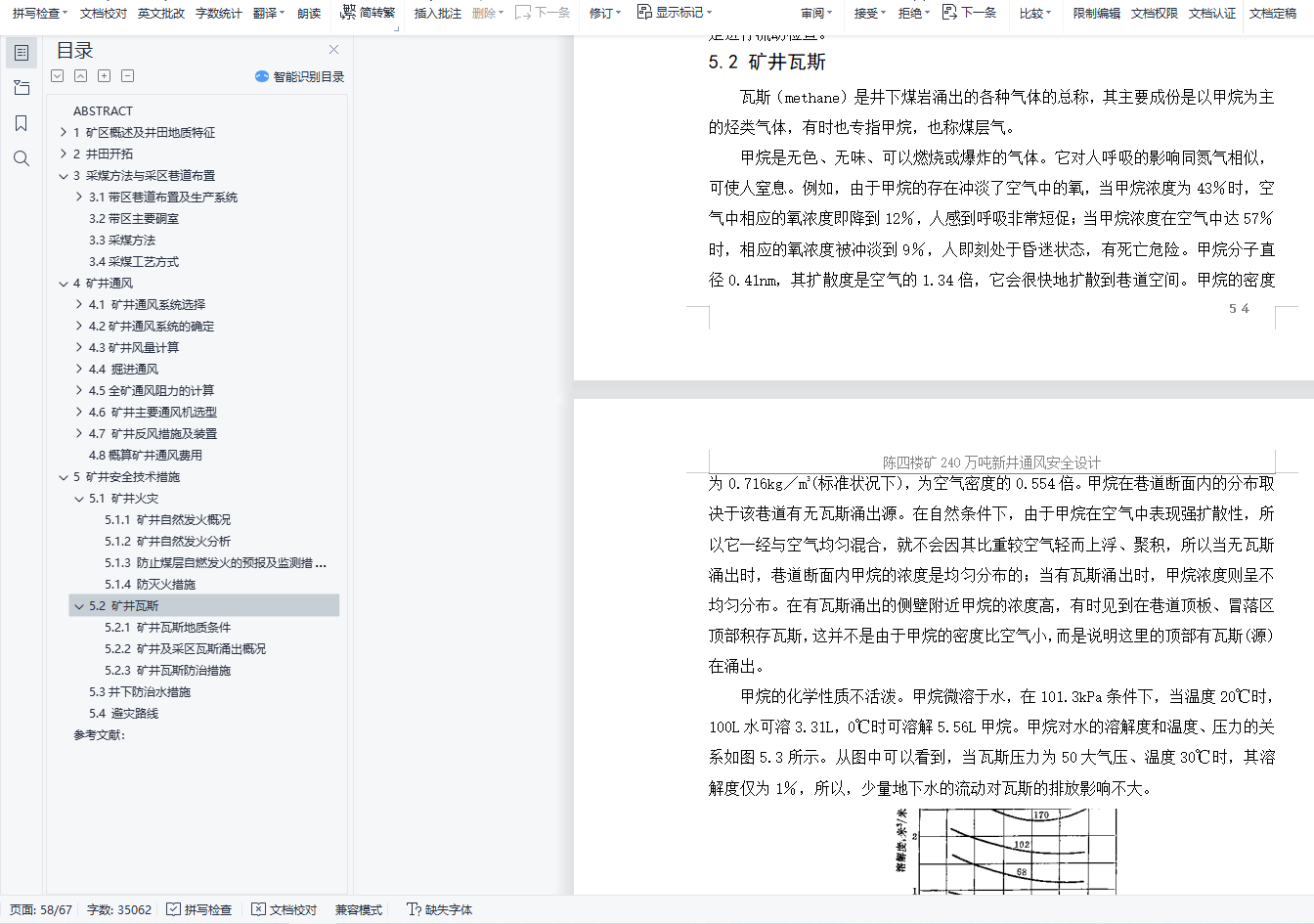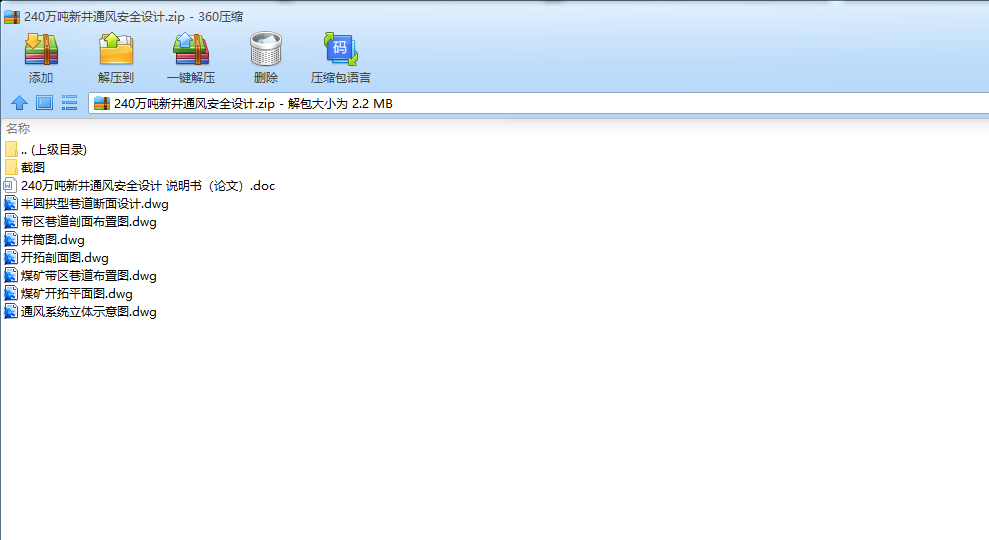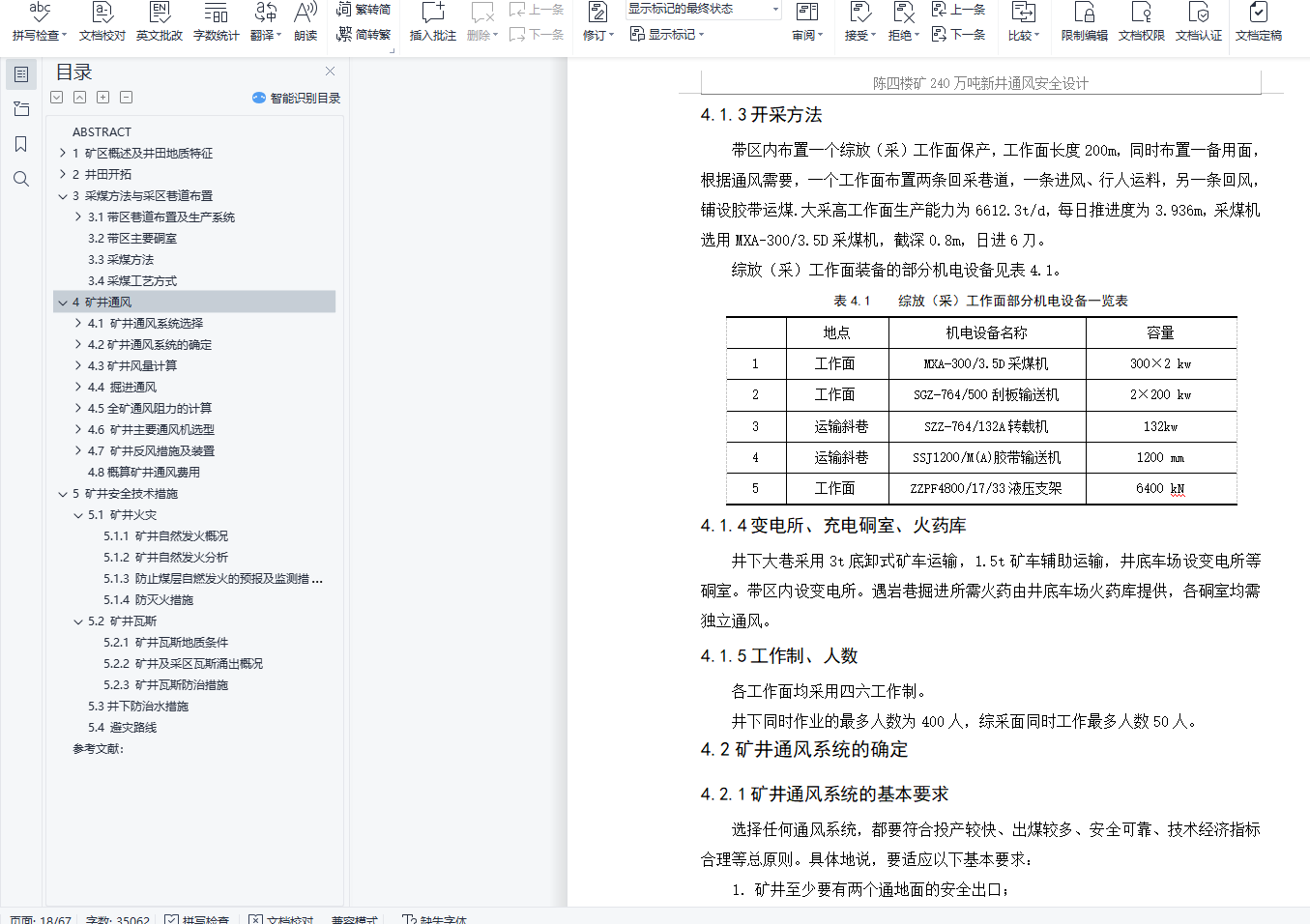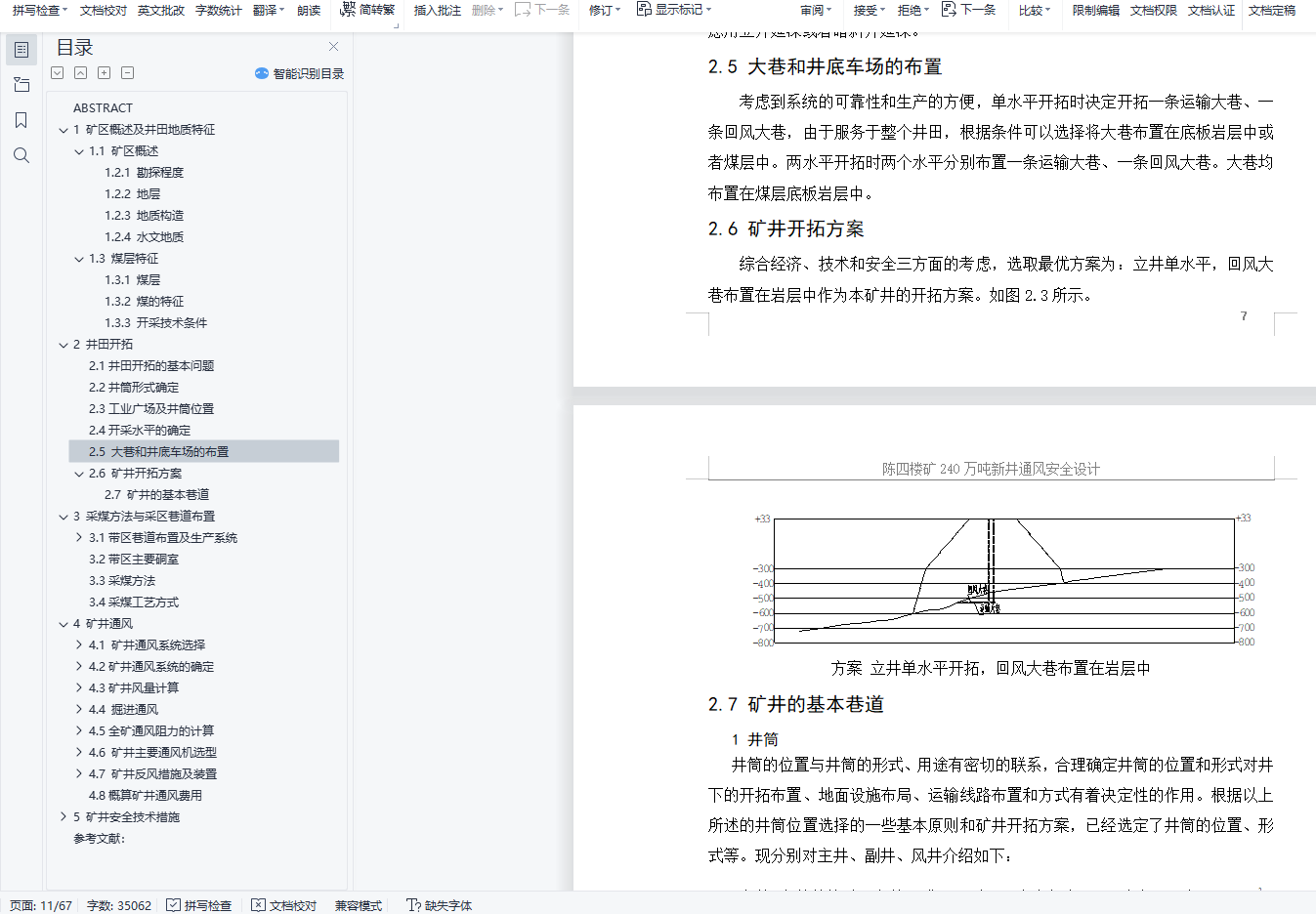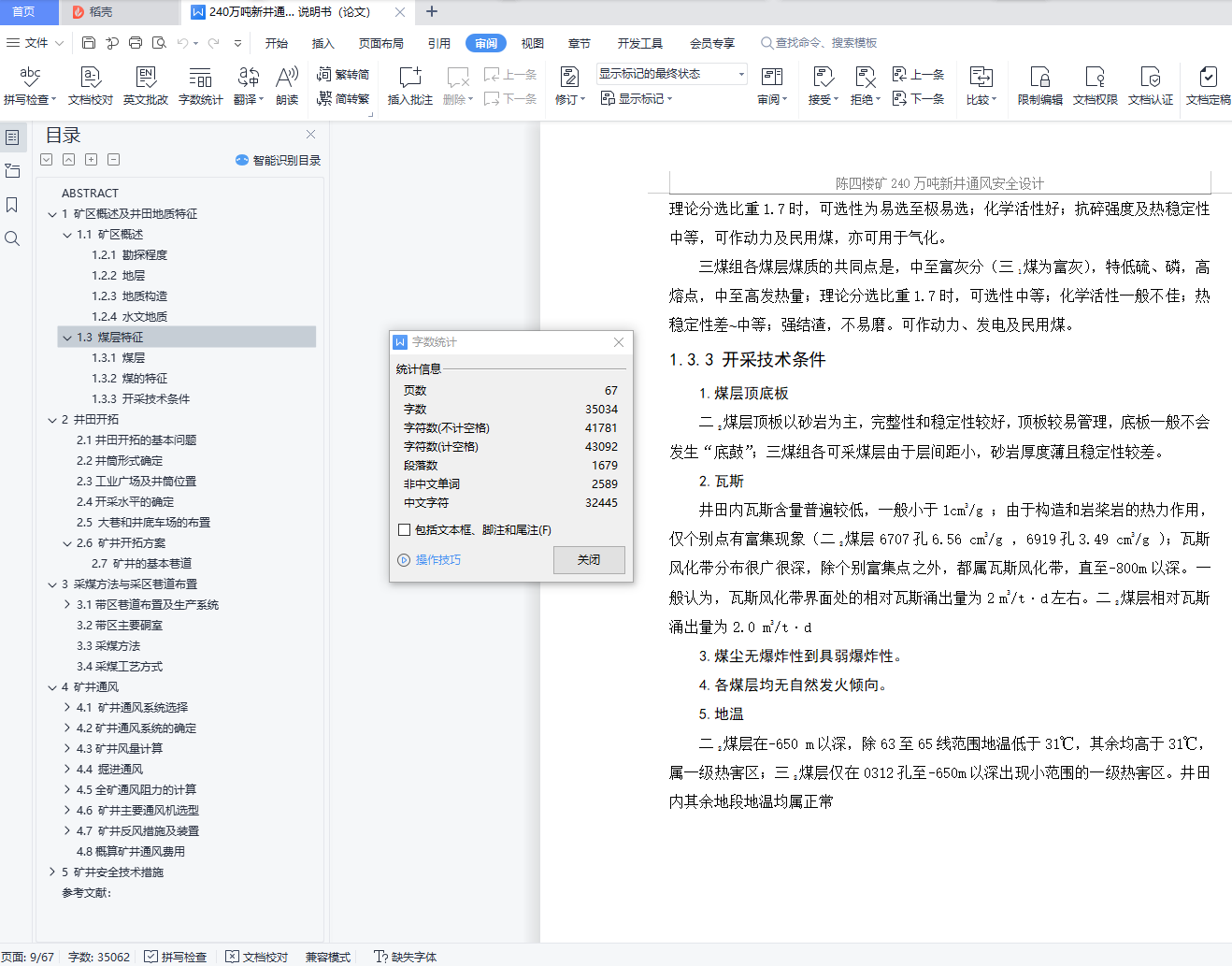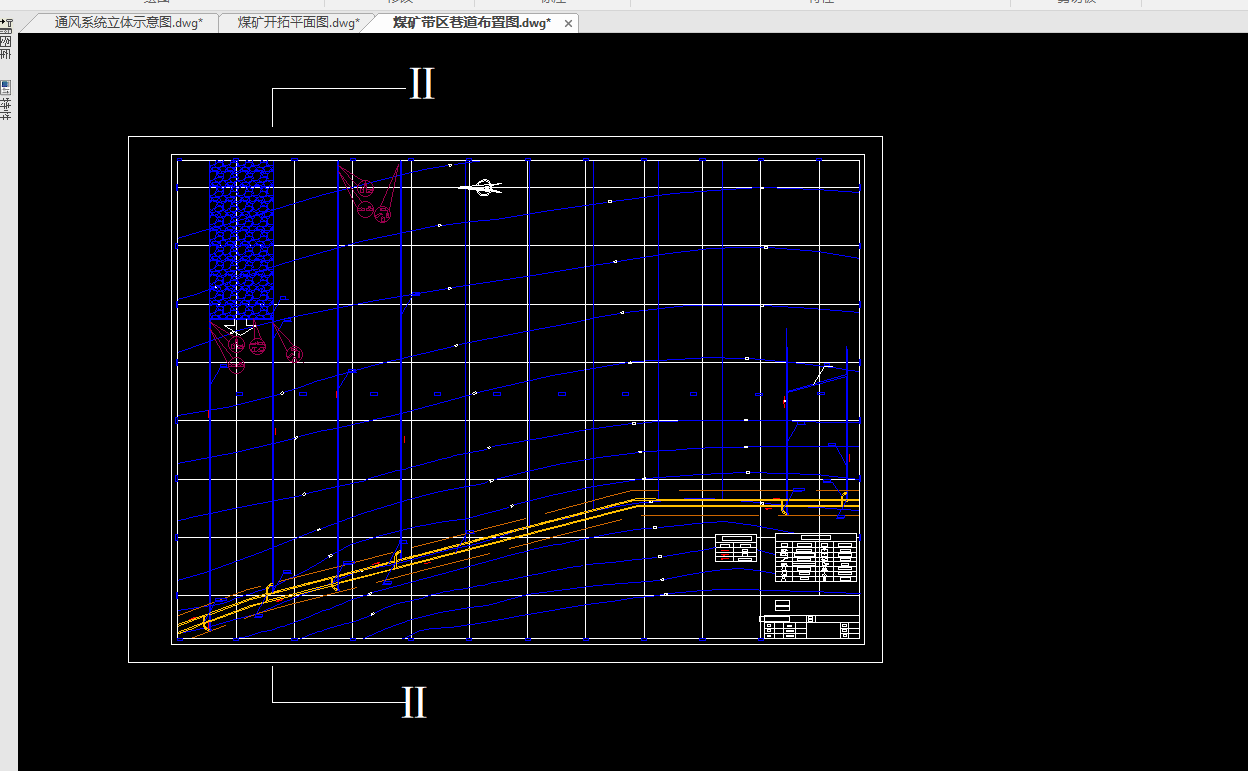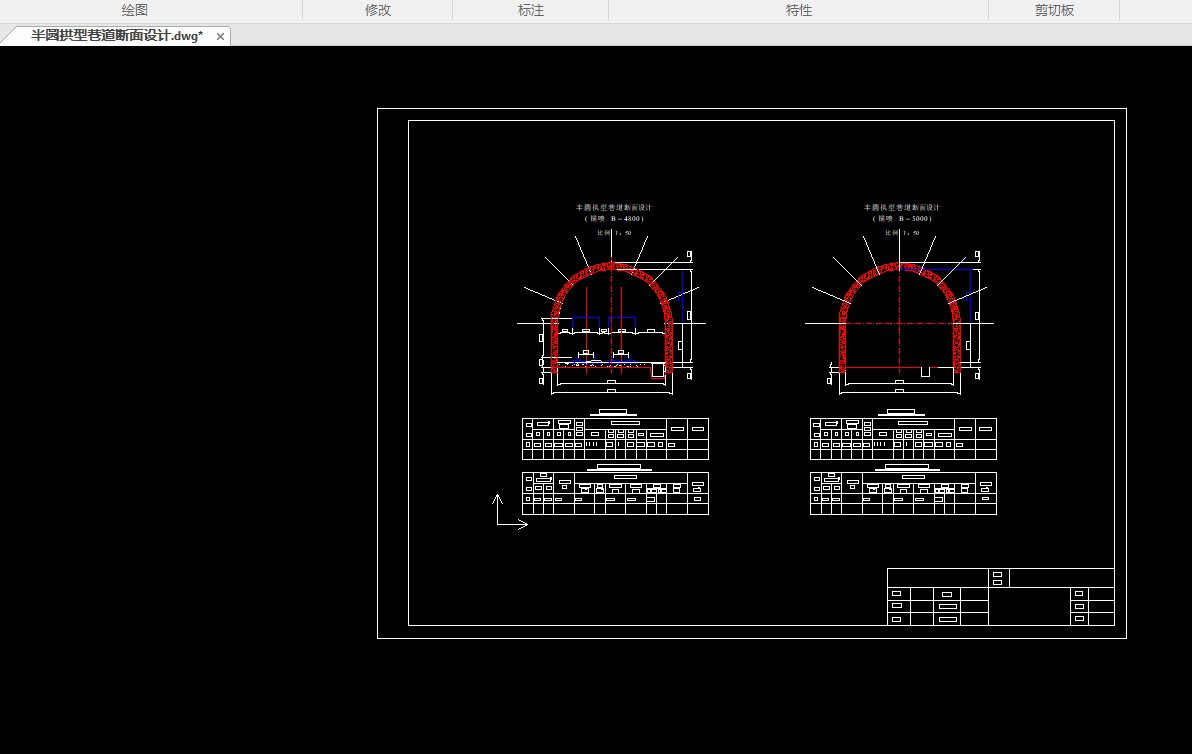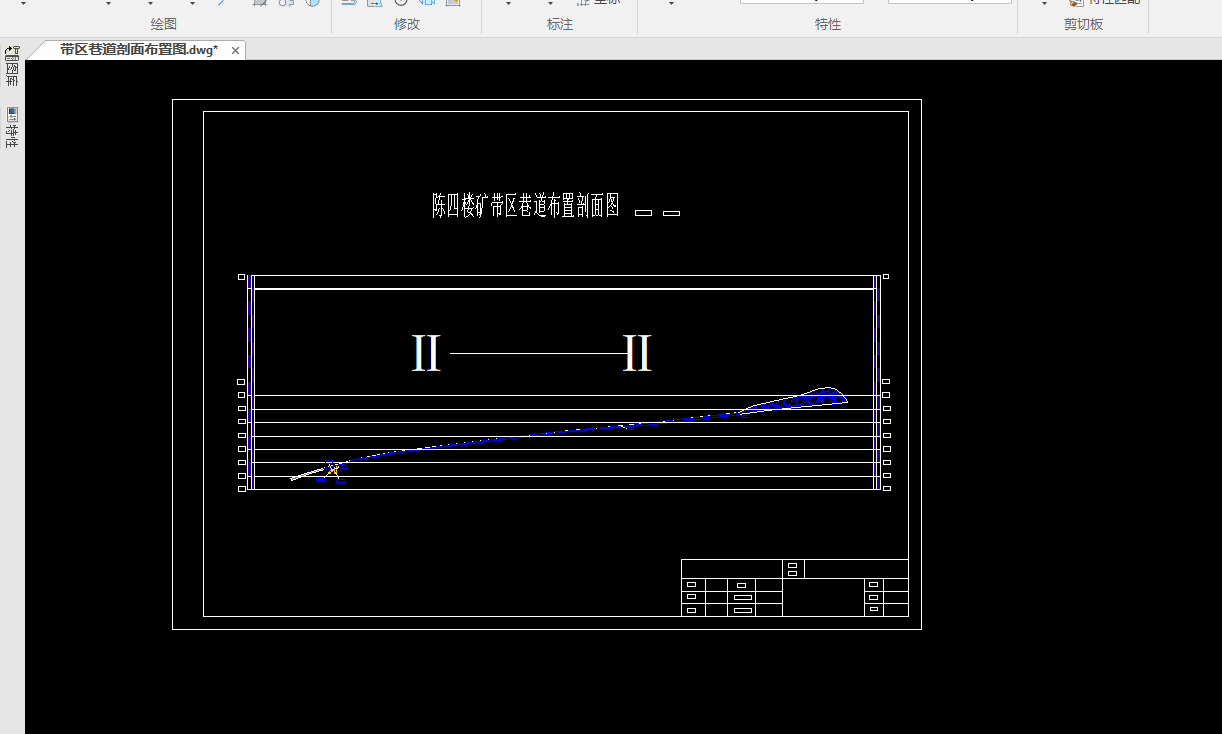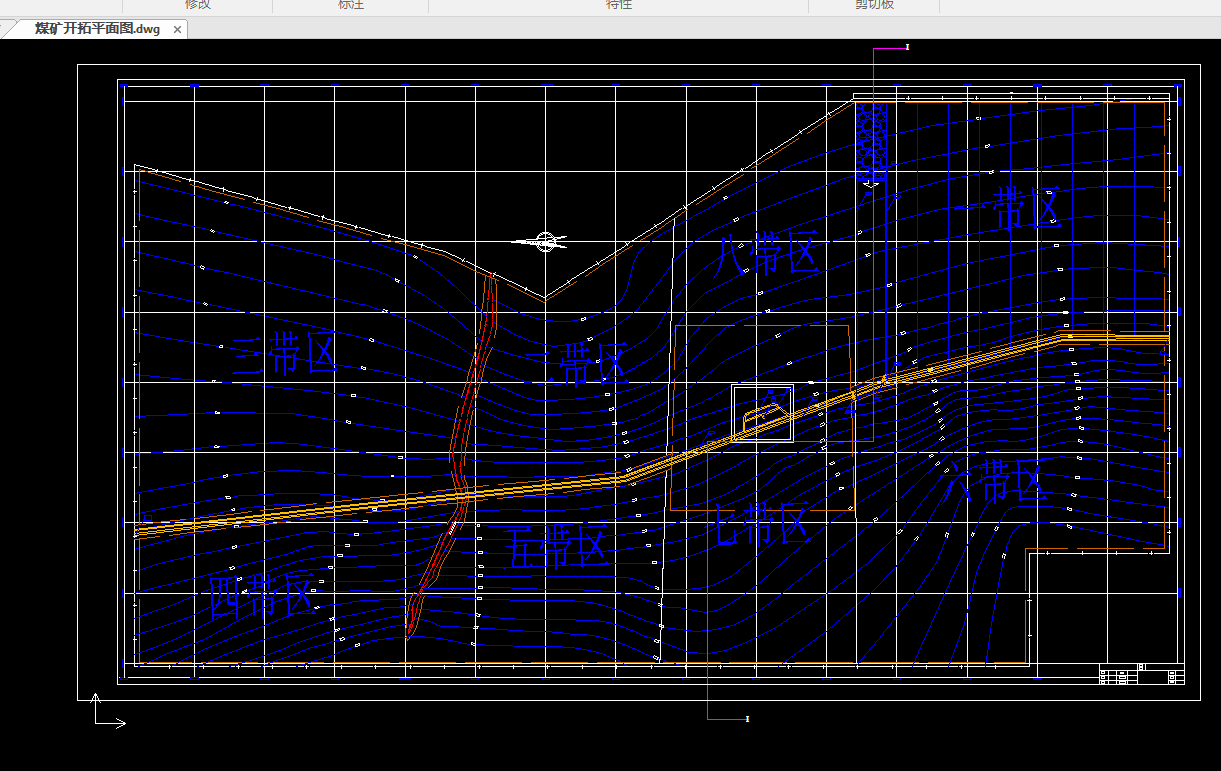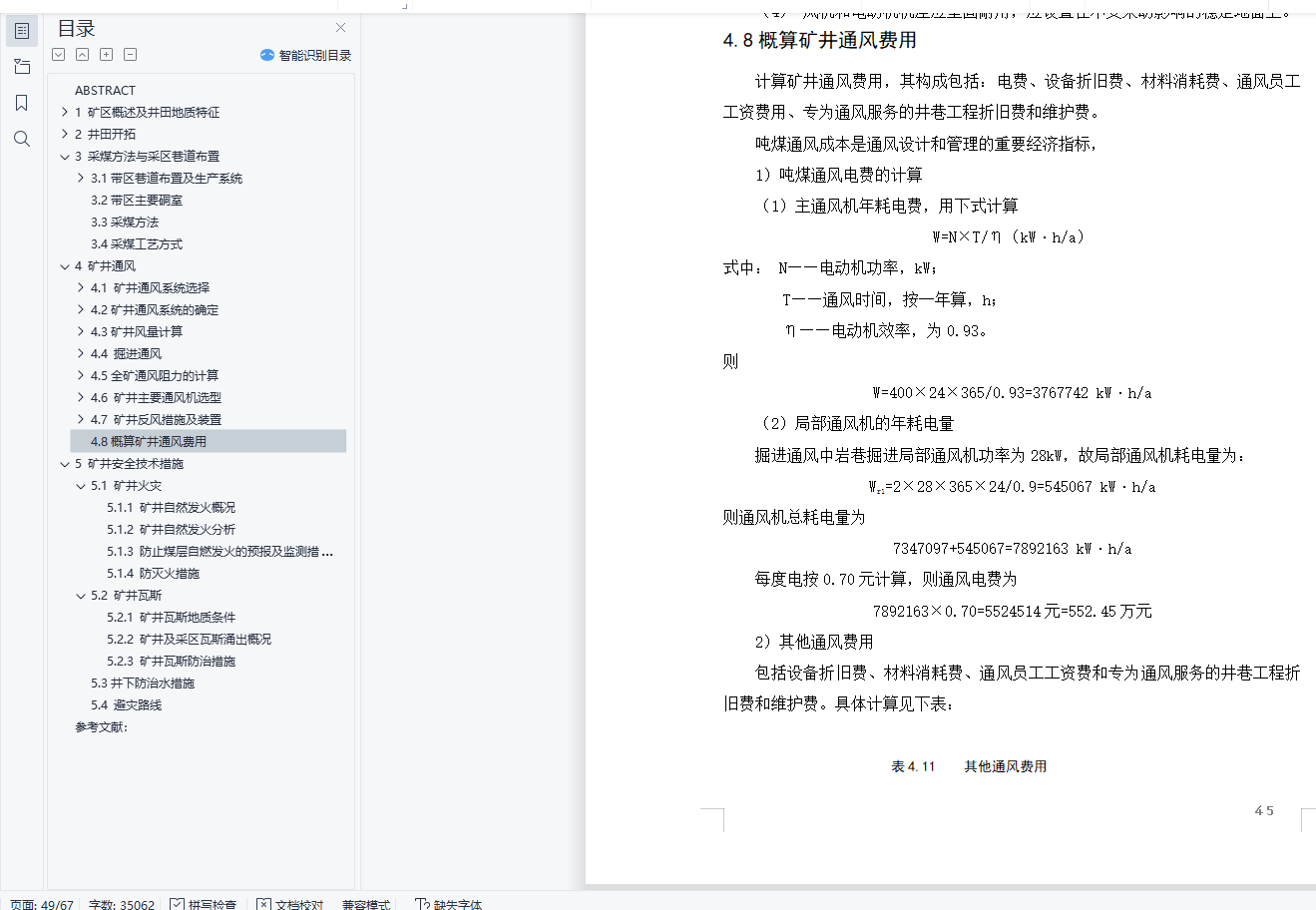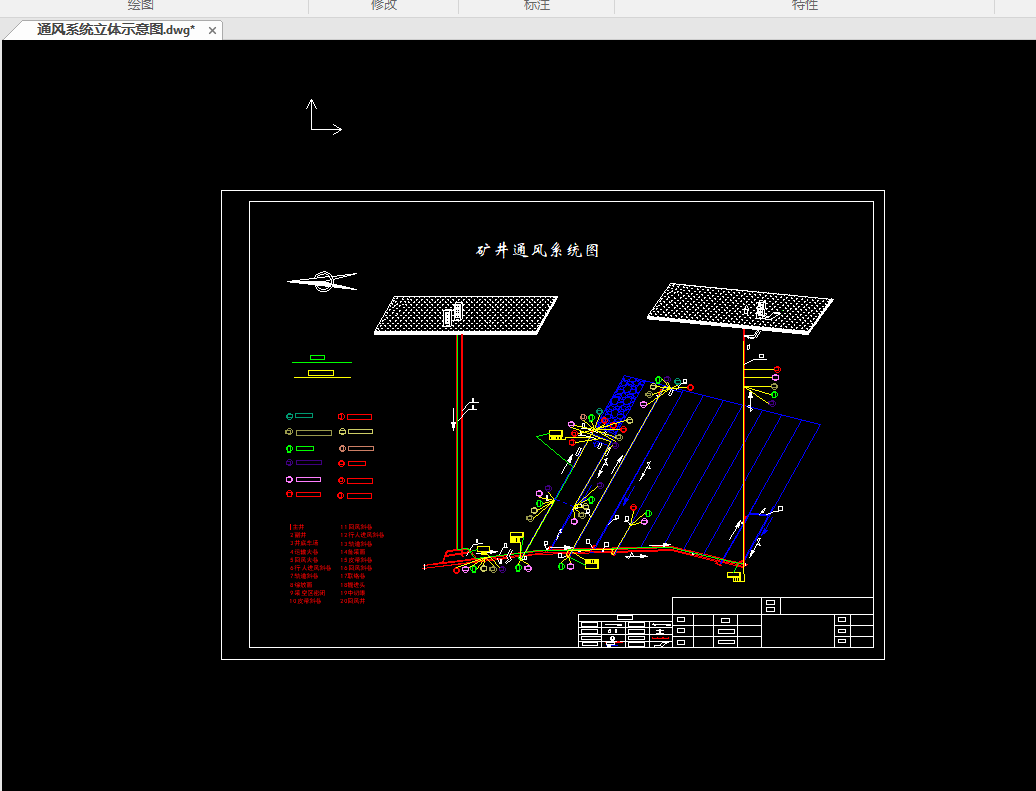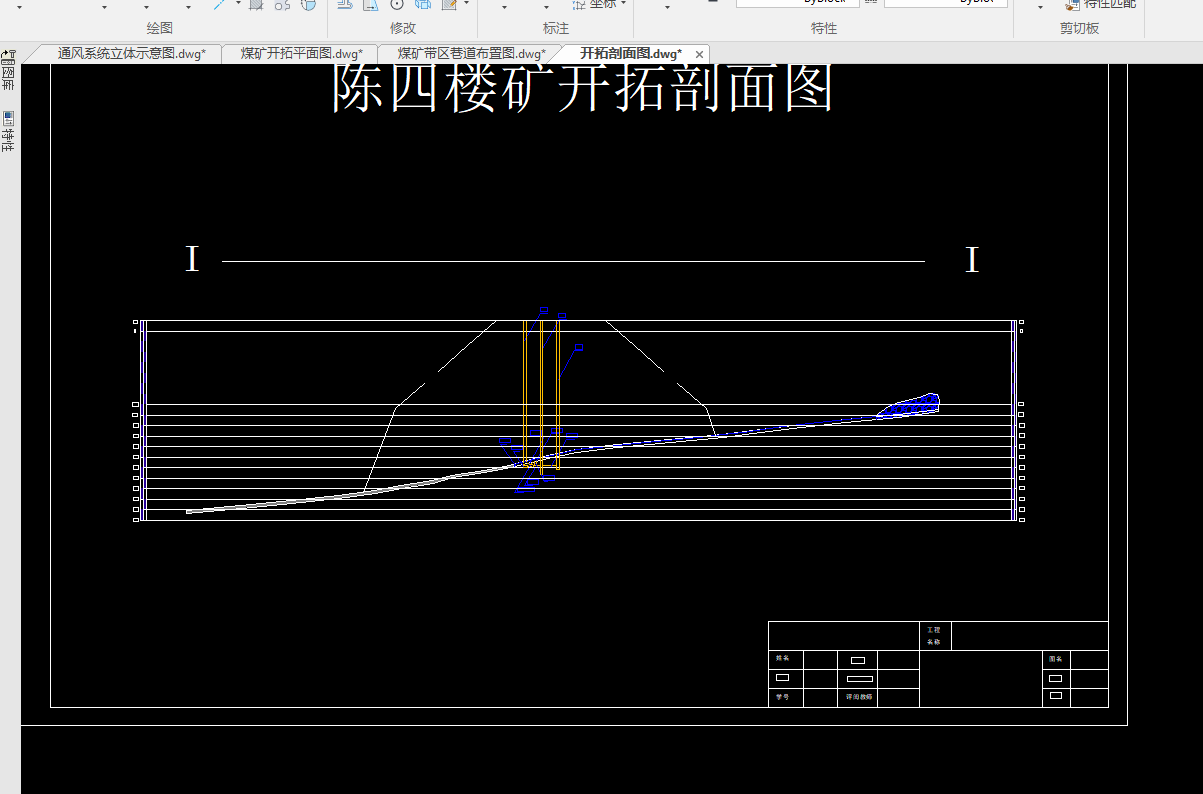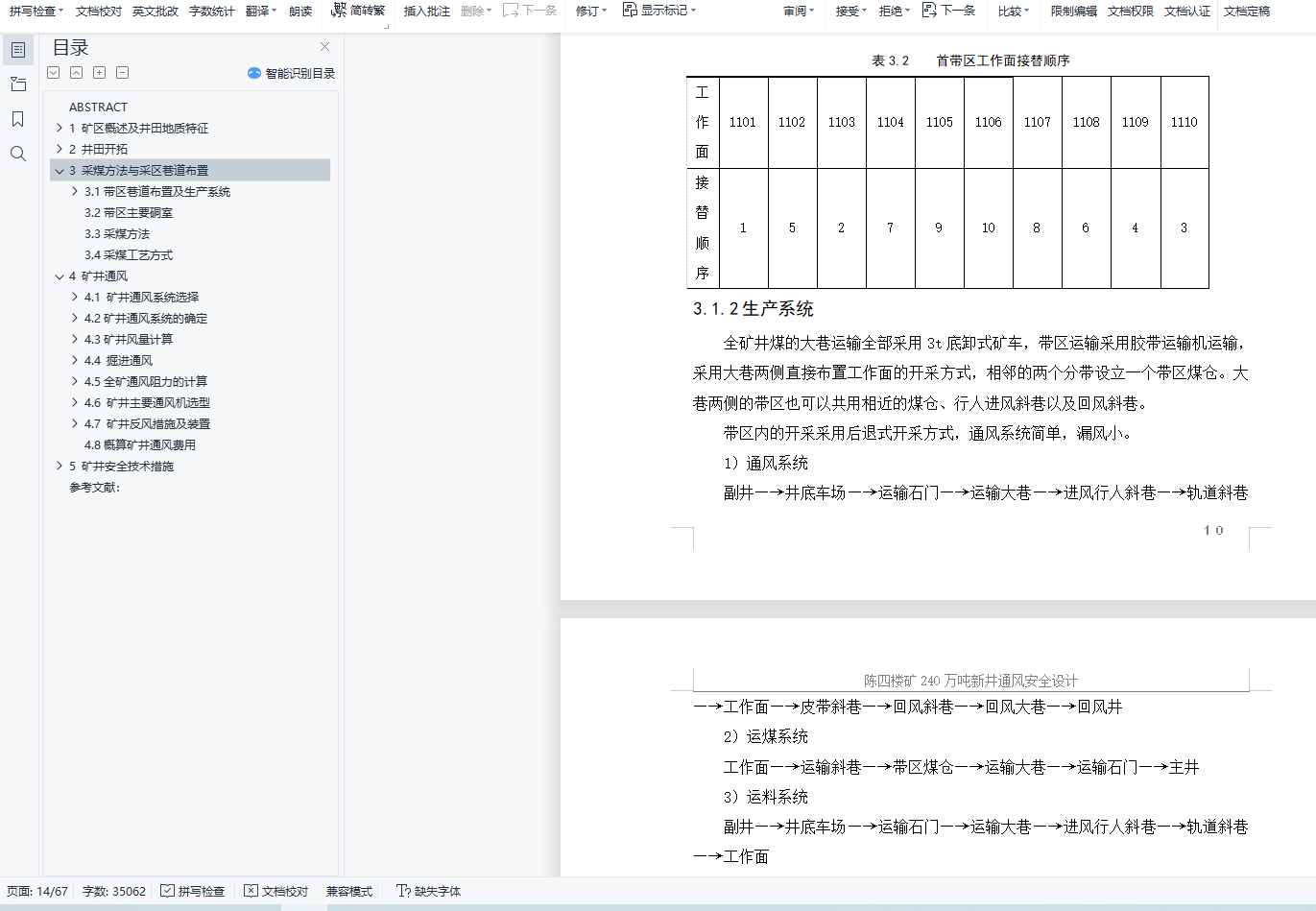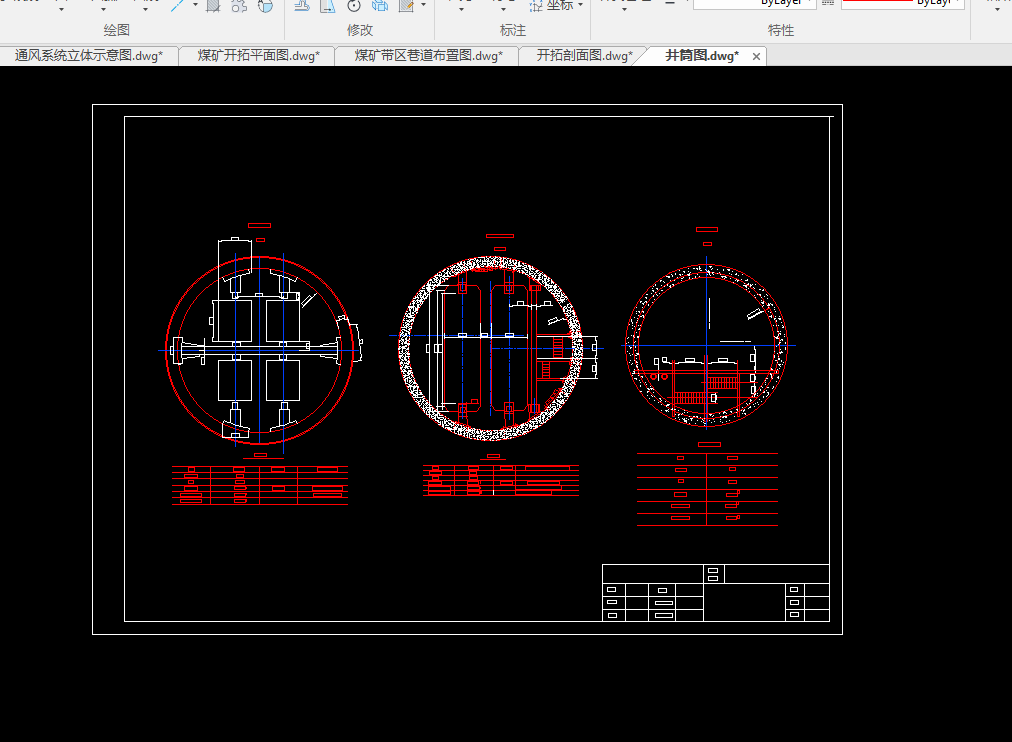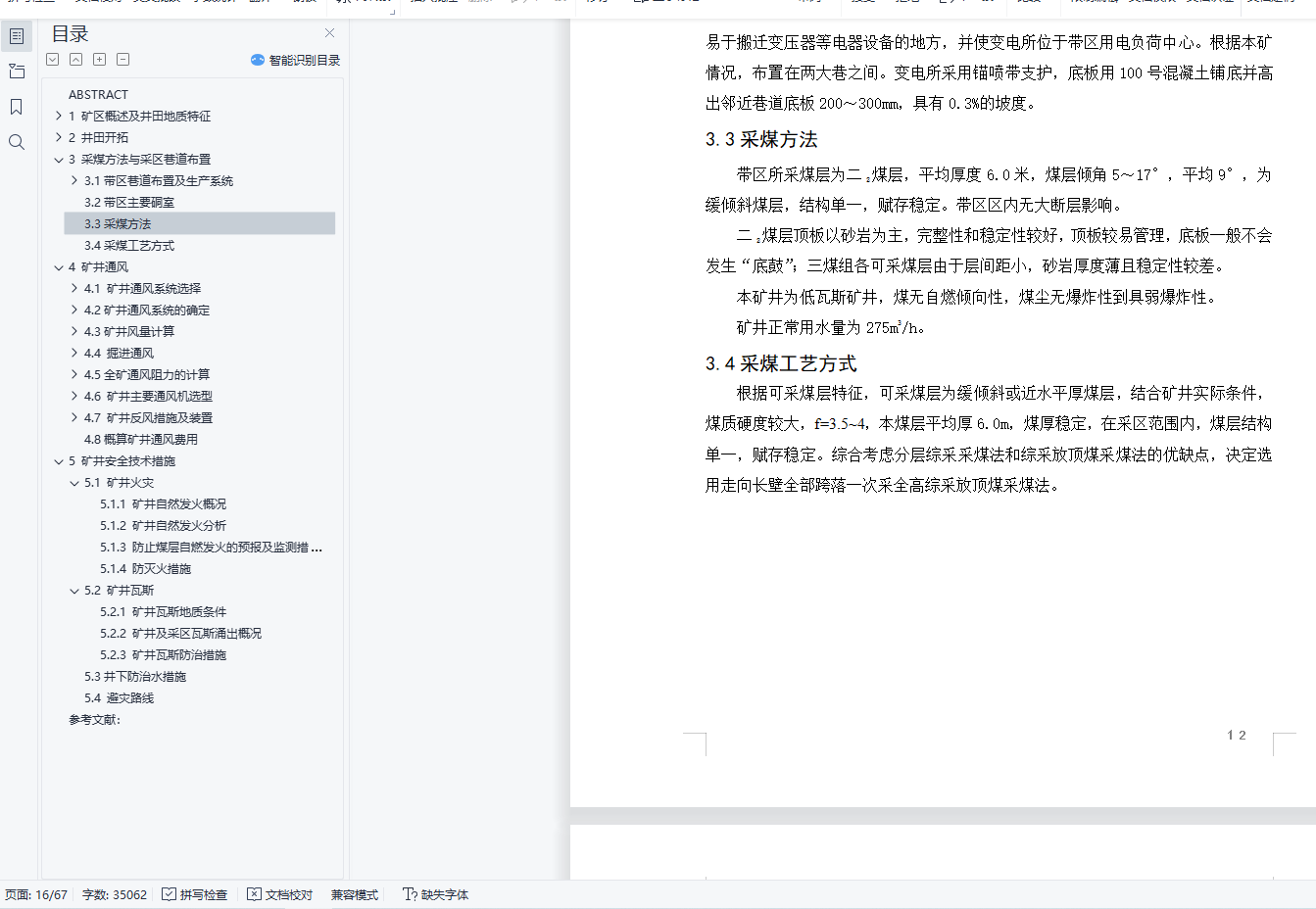 陈四楼矿240万吨新井通风安全设计
陈四楼矿240万吨新井通风安全设计
摘 要
本设计分为一般部分和科技英语翻译部分。一般部分为永城矿区陈四楼煤矿240万吨/年新井通风安全设计;科技英语翻译部分为计算机映射采矿中的断层。
陈四楼煤矿设计生产能力为240万吨/年,矿井服务年限为55年,采用立井单水平,回风大巷布置在岩层中作为本矿井的开拓方案。水平设在-520米。带区布置采用带区单一煤层分带巷道布置,初期在一带区布置一个综合机械化放顶煤工作面,采用倾斜长壁一次开采。矿井采用抽出式通风方式,轨道斜巷进风,皮带斜巷回风。根据通风容易和困难时期的风量和通风阻力计算选择主要通风机,并对通风系统进行了评价。
设计对矿井的瓦斯、自然发火等自然灾害提出了有效的防治措施,特别对自然发火的防治进行了详细的叙述和黄泥灌浆设计,可有效防治自然发火。
科技英语翻译部分探讨了计算机映射采矿中的断层,并举例说明!
关键词:立井; 长壁; 抽出;突水;断层
ABSTRACT
This design is made up of the ordinary part and the scientific English translation part. The ordinary part is the ventilation safety design of 2.4 Mt/a. The scientific English translate part is about the mining’s chasm in the post of the computer.
Chensi colliery designing production capability is 2.4Mt/a, and the service time limit is 55 years. Its mining method is of the vertical shaft with single levels up and down hill. The level is on -520m. The set-up of the belt area applies single seam zone roadway layout. In the early period, we set up an integrated mechanized caving face with a tilt-wall mining. The mining applies Out of a ventilation shaft, the track Inclined Drift into the wind, Inclined Drift back to the wind belt. The mine’s ventilation machine is chosen according to the mine’s air quantity in easy and difficulty ventilation periods and the calculation of the mine’s ventilation resistance, and the mine’s ventilation system is evaluated.
We put forward some effective measures to prevent the disasters of methane, natural fire and so on, and we especially dwell on the prevention of natural fire and the design of yellow mud grouting, and it has a good result.
The scientific English translate part proclaims that the mining’s chasm in the post of the computer and gives some examples.
Key words: vertical mining; longwall; draw out; sudden inflow of water; chasm
目 录
1 矿区概述及井田地质特征
1.1 矿区概述
1.2井田地质特征
1.2.1 勘探程度
1.2.2 地层
1.2.3 地质构造
1.2.4 水文地质
1.3 煤层特征
1.3.1 煤层
1.3.2 煤的特征
1.3.3 开采技术条件
2 井田开拓
2.1井田开拓的基本问题
2.2井筒形式确定
2.3工业广场及井筒位置
2.4开采水平的确定
2.5 大巷和井底车场的布置
2.6 矿井开拓方案
2.7 矿井的基本巷道
3 采煤方法与采区巷道布置
3.1带区巷道布置及生产系统
3.1.1带区准备方式的确定
3.1.2生产系统
3.1.3带区内巷道掘进
3.2带区主要硐室
3.3采煤方法
3.1采煤工艺方式
4 矿井通风
4.1 矿井通风系统选择
4.1.1矿井地质概况
4.1.2开拓方式
4.1.3开采方法
4.1.4变电所、充电硐室、火药库
4.1.5工作制、人数
4.2矿井通风系统的确定
4.2.1矿井通风系统的基本要求
4.2.2、矿井通风方式的选择
4.2.3.确定矿井通风方法
4.2.4带区通风系统的要求
4.2.5、工作面通风方式的选择
4.3矿井风量计算
4.3.1矿井风量的计算原则
4.3.2 总风量的计算
4.3.3 矿井风量分配
4.4 掘进通风
4.4.1 掘进通风方法的选择
4.4.2 掘进通风量
4.4.3 掘进工作面设备选择
4.5全矿通风阻力的计算
4.5.1矿井最大阻力路线
4.5.2矿井通风阻力计算
4.5.3 矿井通风总风阻
4.5.4 矿井通风等积孔
4.5.5 矿井通风系统的分析与评价
4.6 矿井主要通风机选型
4.6.1 矿井自然风压的计算
4.6.2 通风机的选择
4.6.3 电动机的选择
4.6.4对矿井主要通风设备的要求
4.6.5对反风、风峒的要求
4.7 矿井反风措施及装置
4.7.1矿井反风的目的和意义
4.7.2 矿井反风设施的布置
4.7.3 对矿井通风设备的要求
4.8概算矿井通风费用
5 矿井安全技术措施
5.1 矿井火灾
5.1.1 矿井自然发火概况
5.1.2 矿井自然发火分析
5.1.3 防止煤层自燃发火的预报及监测措施
5.1.4 防灭火措施
5.2 矿井瓦斯
5.2.1 矿井瓦斯地质条件
5.2.2 矿井及采区瓦斯涌出概况
5.2.3 矿井瓦斯防治措施
5.3井下防治水措施
5.4 避灾路线
参考文献:
致 谢
